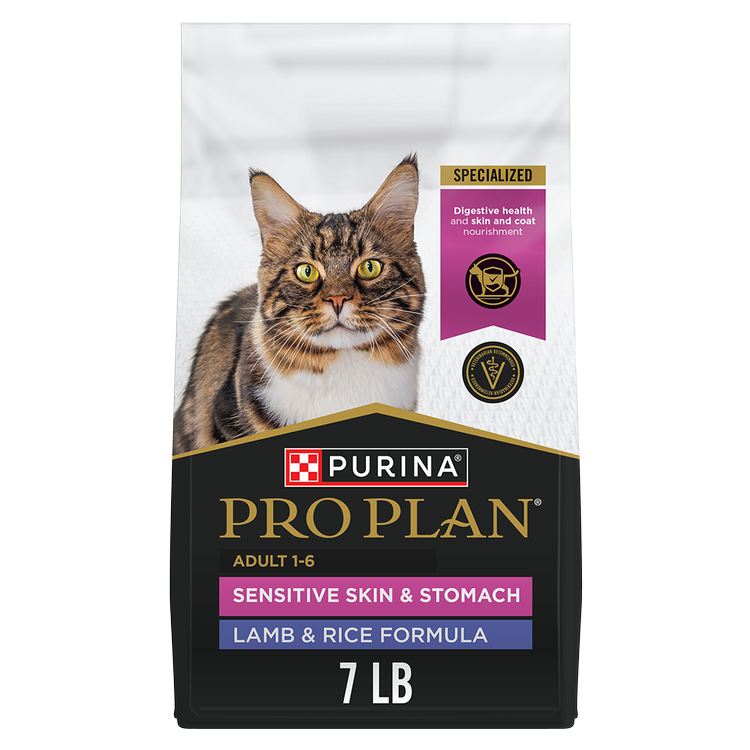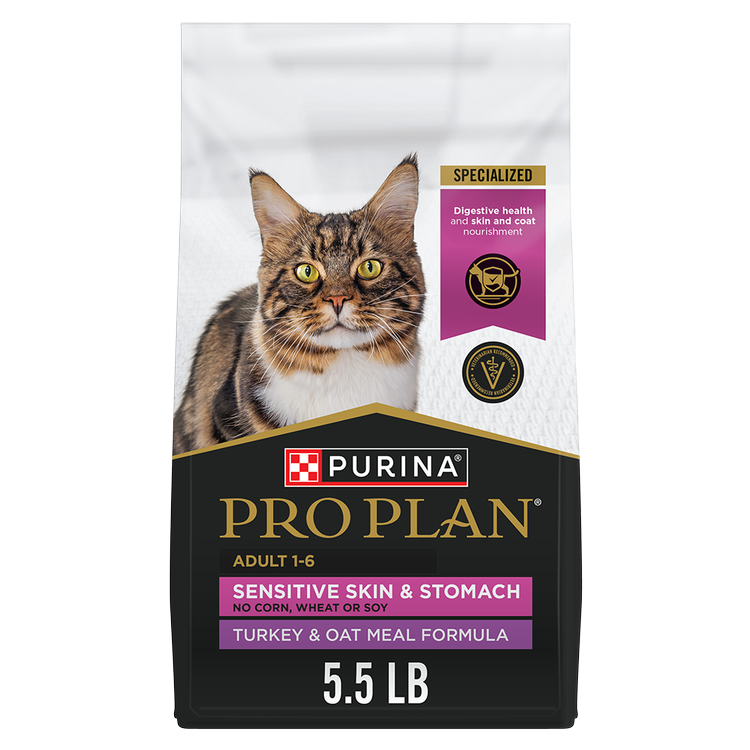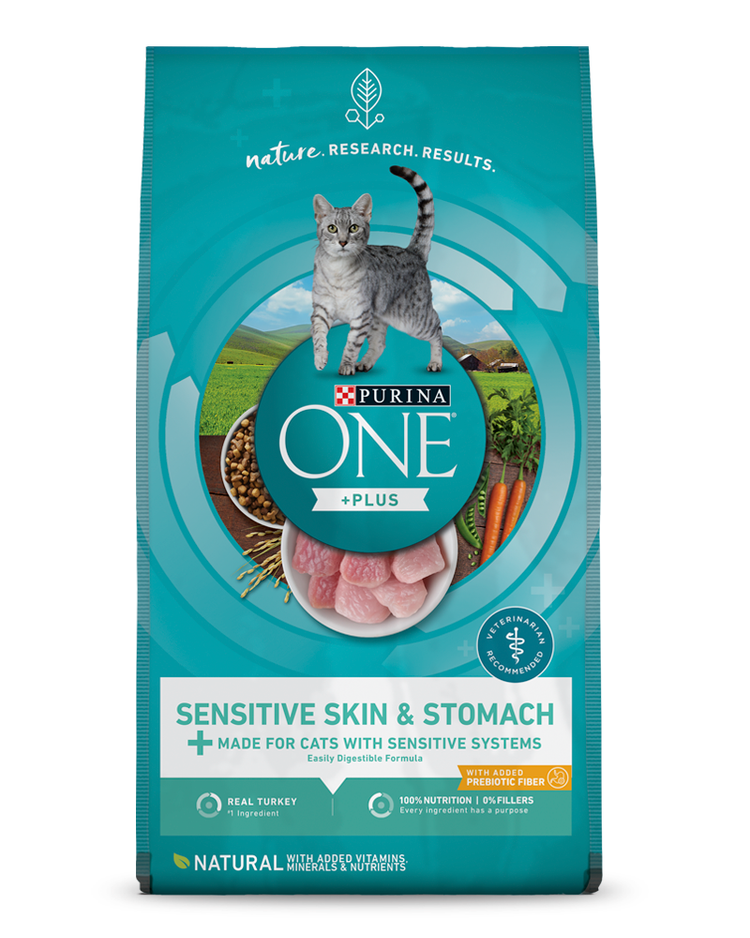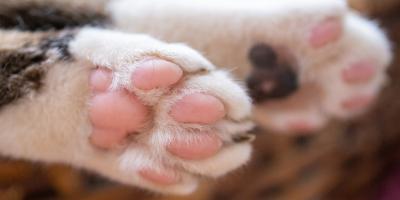What Causes and How to Get Rid of Cat Dandruff?


If you noticed white flakes on your feline’s fur, there’s a good chance it’s cat dandruff. Fortunately, the skin condition is common and usually the result of treatable health issues.
So, if you’re wondering how to get rid of cat dandruff, there are several solutions ranging from eating more wet food to treatment by your veterinarian (the appropriate choice will depend on the underlying cause for your cat).
What exactly is cat dandruff (and what is it not)? A Purina expert breaks it down for you.
What Is Cat Dandruff?
According to Emily Cross, DVM, DABVP, cat dandruff is a bit of a misnomer. “Dandruff” is just a common term referring to white or gray flakes on the skin. It’s a symptom of several different conditions and appears anywhere your cat has dry skin.
What Is the Difference Between Cat Dander & Dandruff?
Although they sound similar, it’s important to note that cat dandruff is different from dander.
Cat dander is a normal—and healthy—shedding of skin cells. Dander is often blamed for causing allergic reactions in humans, but that’s another misconception. The primary allergen is found in cats’ saliva, which is then transferred to the fur and skin during grooming.
Dander is microscopic, so you won’t be able to see it. Depending on your sensitivity to certain allergens, though, you’ll know it’s in your home if you develop a reaction to it.
What Causes Cat Dandruff or Dry, Flaky Skin?
Dry skin is a common cause of flakes, Dr. Cross says. Environmental factors such as low humidity, diet (particularly low-fat diets), and stress can also be factors.
Dry, flaky skin is more common in cats, but there is a greasy form as well. Too much oil in the skin can cause a buildup of skin cells, which then flake off.
Underlying Health Conditions
Some cases of cat dandruff are caused by more serious health issues.
“Besides a dry or oily coat, there are other reasons for cats to have flaky skin, such as obesity or arthritis. These conditions can limit a cat’s ability to groom themselves and remove dead skin cells,” notes Dr. Cross.
Additionally, flaking skin can sometimes be attributed to food allergies or parasitic infections. You may also see it if your cat has fleas, ringworm or hyperthyroidism.
Since there are many reasons for a flaky coat, it’s a good idea to consult your veterinarian to rule out any potential medical causes and find the right treatment.
What Are the Symptoms of Cat Dandruff?
Symptoms of cat dandruff include white flakes on skin, fur or bedding.
If your cat’s flaky skin is accompanied by any of the following, call your veterinarian right away. These symptoms can indicate an infection or other health condition requiring medical attention:
- Hair loss
- Itching
- More frequent grooming
- Redness of the skin
- Feeling unwell
How Do You Get Rid of Cat Dandruff?
For dandruff that’s not caused by an underlying health problem, reducing flakes can be as simple as brushing your cat regularly. This will stimulate their skin and remove excess debris.
Topical treatments can also be helpful, if your cat will allow them, according to Dr. Cross
Other kinds of cat dandruff treatment include using a humidifier to add moisture to the air (especially during dry winter months), and infrequent baths with a soothing, moisturizing shampoo formulated for felines.
If you try these recommendations and the skin continues to flake, or if their hair starts falling off in clumps, contact your veterinarian.
What Is the Best Cat Food for Dandruff?
“Nutrition may play a key role in managing your cat’s flaky skin,” says Dr. Cross. Putting overweight cats on a weight management program for safe, effective weight loss can help restore normal grooming activities.
This may involve eating fewer calories, switching to a healthy weight cat food and/or implementing exercise into their daily routine.
Cat food enriched in essential fats may also be helpful. Omega-3 fatty acids can reduce inflammation and omega-6 fatty acids help restore a healthy skin barrier.
Plus, you can try incorporating wet cat food into your cat’s diet. Since many cats don’t drink enough water throughout the day, wet food is a good way to supplement their hydration.
Proper hydration can help address the dry, itchy skin that often leads to flakes. A hydration supplement is a simple way to promote hydration.
For pet owners who want to get rid of cat dandruff, remember it’s always a good idea to make an appointment with your veterinarian. They can diagnose the problem, prescribe treatment and rule out more serious health concerns.
For more expert tips on cat grooming, nutrition and more, visit our Pet Expertise page.
Related articles

Earn myPurina Rewards with Every Purchase
Use your points for treats, toys, and gift cards with myPurina app.






